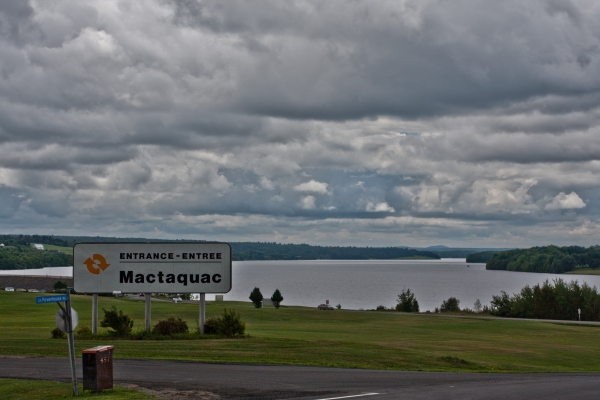St. John River – restoring this complex system requires a holistic view and long-term commitment
By Simon J. Mitchell
NB Power’s recent announcement that the Mactaquac Dam is to be refurbished, rebuilt or decommissioned has provided a new timeline under which we can collectively imagine the future of the St. John River. It is a catalyst along with a number of other known issues, which were identified by the Canadian Rivers Institute (CRI) in The Saint John River: A State of the Environment Report, for a discussion on the future health of the St. John River system.
The goal of WWF-Canada’s Living Rivers initiative is to help protect and restore river health across the country. Projects under the initiative are underway in a number of watersheds across Canada, including the Skeena, Athabasca, St. Lawrence and St. John rivers. Our work is ecosystem and science based, rather than issue specific. The St. John River is the latest project under the Living Rivers initiative; we decided to focus our efforts on the St. John because we see a real opportunity to play a part in shaping the future of the river and to share this wonderful story with others in the region and others across this river nation who are struggling with many of the same complex issues.

(C) Robert Rangeley- WWF Canada
We believe that to have robust solutions to protecting and restoring river health requires reasoned and ongoing dialogue among governments, industry, NGOs and communities that is informed and guided by the best science we have or can generate. This is exactly why we engaged in the November 2011 community tour along the St. John River, where we heard a range of concerns, from various perspectives, related to a number of issues in the watershed. Our engagement in the St. John River means listening and working with all interested parties along the river to address its health, and ultimately providing science and community based input into the decision making processes that will shape the future of the dam and the river. This won’t be an easy task and there will be some difficult times ahead as we move through this process. We recognize that there are a range of options related to the future of the Mactaquac Dam, and that the best option is the one that improves the health of the river and the communities that depend on it.
Thankfully, we have some time on our side. With a strong science basis and plenty of engagement, we can collectively develop robust solutions to move the St. John River further along its restoration trajectory. It is our commitment to the watershed community and to the river that we will continue to engage with those who are interested in contributing to this effort towards a positive future for the river, its people and nature.

(C) Robert Rangeley- WWF Canada
NB Power’s recent announcement that the Mactaquac Dam is to be refurbished, rebuilt or decommissioned has provided a new timeline under which we can collectively imagine the future of the St. John River. It is a catalyst along with a number of other known issues, which were identified by the Canadian Rivers Institute (CRI) in The Saint John River: A State of the Environment Report, for a discussion on the future health of the St. John River system.
The goal of WWF-Canada’s Living Rivers initiative is to help protect and restore river health across the country. Projects under the initiative are underway in a number of watersheds across Canada, including the Skeena, Athabasca, St. Lawrence and St. John rivers. Our work is ecosystem and science based, rather than issue specific. The St. John River is the latest project under the Living Rivers initiative; we decided to focus our efforts on the St. John because we see a real opportunity to play a part in shaping the future of the river and to share this wonderful story with others in the region and others across this river nation who are struggling with many of the same complex issues.

(C) Robert Rangeley- WWF Canada
We believe that to have robust solutions to protecting and restoring river health requires reasoned and ongoing dialogue among governments, industry, NGOs and communities that is informed and guided by the best science we have or can generate. This is exactly why we engaged in the November 2011 community tour along the St. John River, where we heard a range of concerns, from various perspectives, related to a number of issues in the watershed. Our engagement in the St. John River means listening and working with all interested parties along the river to address its health, and ultimately providing science and community based input into the decision making processes that will shape the future of the dam and the river. This won’t be an easy task and there will be some difficult times ahead as we move through this process. We recognize that there are a range of options related to the future of the Mactaquac Dam, and that the best option is the one that improves the health of the river and the communities that depend on it.
Thankfully, we have some time on our side. With a strong science basis and plenty of engagement, we can collectively develop robust solutions to move the St. John River further along its restoration trajectory. It is our commitment to the watershed community and to the river that we will continue to engage with those who are interested in contributing to this effort towards a positive future for the river, its people and nature.

(C) Robert Rangeley- WWF Canada

